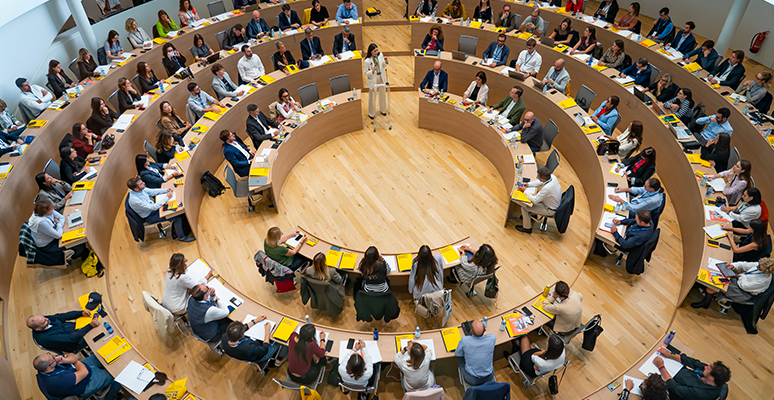
- Start date
- Duration
- Format
- Language
- 1 Dec 2025
- 3 days
- Class
- English
A journey through the digital revolution to learn how to capitalize on these enhancing technologies to gain competitive advantage in existing and new markets.
Milano, 21 August 2019
“If you truly want to understand something, try to change it”. This familiar motto, attributed to social psychologist Kurt Lewin, does not simply reverse the well-known rule “think first, then act”; it also contains the essence of a new way of creating knowledge by narrowing the distance between theory and practice, research and implementation. Indeed, nothing is more practical than a good theory, especially when you can immediately test it in the field. Human-centered design has risen to this challenge, and provides novel opportunities to generate concrete, shared and durable change within organizations. That is why SDA Bocconi’s Paola Cillo and Frog Design’s Craig Cisero have chosen this approach for their workshop Innovation by Design, starting next September in SDA Bocconi. They tell us about the new method.
“The human-centered design approach is based on the direct collection of evidence from multiple sources and in multiple ways – interviews, direct observation, pictures, videos,” Cillo says. “It tries not to focus on a specific part of the problem, or a single-moment observation, but to encompass the entire experience.” “That way you are not looking to confirm your initial hypothesis, but you walk your way with people in order to understand the motivations behind their behaviors: why they do what they do, instead of what they say they do,” confirms Cisero. “Changing a strategy or a product is creating a new understanding about what is valuable to users.”
Thanks to this human-driven heuristics, you can get a first-hand, less filtered (thus biased), factual understanding of the problem. A really versatile approach, “it applies to developing new concepts, products and services, business models, or a new cultural approach within organizations or about a specific problem,” continues Cillo. “It encompasses 4 steps: first, you research the topic and get a rough understanding of it; then you have to empathize with the human beings you are trying to support, feeling what they feel in that specific situation – this is a crucial step in the whole process. The ideation phase gives shape to a new idea, starting from what has been brought up in the previous two phases. The design phase follows, where you make your idea visible, and you possibly craft it into a prototype: this brings the new idea to life in a tangible way so that everybody can learn from it by making it – for instance, visualizing the idea allows for early detection of pain points. Finally, in the development stage, you can move on to transforming your idea into something that can work in real life.”
That is why human-centered design means not only you are seeing people as all-round human beings, but you are considering them in their specific organizational and cultural context: “Understanding the local culture is key to let people be comfortable about expressing their feelings,” says Cisero. “In Kenya, for instance, it is really important to have the local community buy-in and make it a part of the design process, you will thus opt for larger interviewing sessions; whereas in Saudi Arabia you will arrange one-to-one interviews (and doing research with women is going to be complicated).”
Flexible, high-impact, and not just in theory. The two instructors proudly look back on case histories that account for the effectiveness of innovation by design. “An example in point is the research we conducted on a new medicine for hepatitis C,” recalls Craig Cisero. “One of the primary targets were people using intravenous drugs, who are a very difficult population to access, engage, and get to adhere to medical protocol. We spent a lot of time with them to understand their routines, how they were engaging with the health system, and how they interacted with their peers and mentors. It turned out that their environment has many more touch points than we imagined; for instance pharmacists play an important role, as well as people who work in community centers, when it comes to information. The pharmaceutical company has thus been able to roll out several initiatives and value-adding services along with their product.” When you focus on people, the idea of value inevitably expands.
SDA Bocconi School of Management

A journey through the digital revolution to learn how to capitalize on these enhancing technologies to gain competitive advantage in existing and new markets.

Fornire gli strumenti per (ri)disegnare la roadmap di adozione e sviluppo dell’AI in azienda bilanciando strategia, elementi tecnologici, organizzativi e di contesto.

At the end of the program you will learn how to use key data and metrics, analyzing them with appropriate models and tools.

